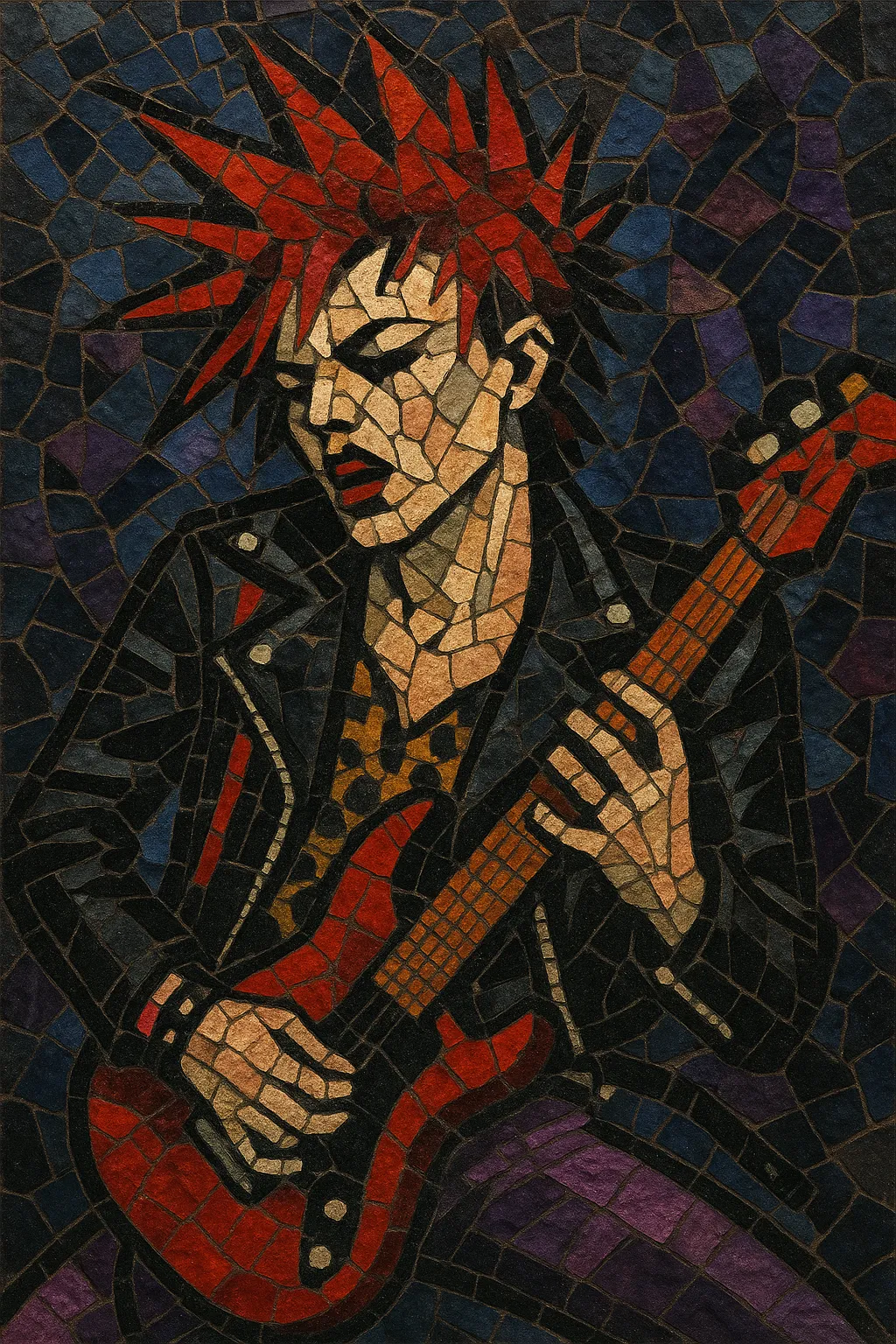Glam punk is a high-energy fusion of the glittery theatrics and pop-savvy hooks of glam rock with the raw speed, sneer, and DIY attack of early punk.
It emphasizes swaggering vocals, crunchy guitar riffs, stomping glam beats, and catchy choruses, while retaining a streetwise, confrontational edge.
Visually, it mixes androgynous, flamboyant fashion with punk’s torn-leather grit, reflecting themes of decadence, nightlife, and outsider style.
Musically it favors short, punchy songs built on power chords and major-key hooks, often colored by handclaps, gang vocals, and simple, memorable riffs.
Glam punk took shape in the early 1970s as artists absorbed the flamboyance and pop directness of glam rock while pushing toward a rougher, faster, and more street-level sound. In New York, the New York Dolls crystallized the blueprint: glitter and platform shoes paired with overdriven guitars, concise song forms, and a provocative, tongue-in-cheek attitude. In London, the Hollywood Brats paralleled this approach, marrying T. Rex–style glam swagger to proto‑punk urgency.
As punk exploded in 1976–77, glam punk’s style—sneering vocals, power‑chord riffing, and a theatrical, rebellious image—fed directly into the new movement. Bands like the Damned and Generation X carried glam’s showmanship into UK punk, while Johnny Thunders & the Heartbreakers took the Dolls’ template into the CBGB/Max’s Kansas City scene, tightening arrangements and speeding up tempos.
While punk diversified into hardcore, post‑punk, and new wave, glam punk persisted in cult circles and influenced sleaze‑leaning rock scenes. Finland’s Hanoi Rocks became a major carrier of the style, blending Dolls‑like swagger with tuneful choruses and helping to shape the sound and look that would inform 1980s glam metal. In the 1990s, NYC acts such as D Generation revived glam punk’s street romanticism and hooky aggression.
The genre continues in waves of revivalism and retro‑minded scenes. Bands draw on the same core: glitter meets leather, big sing‑along choruses, tight two‑to‑three‑minute songs, and performative flair. Its DNA remains audible in pop‑leaning punk, sleaze rock, aspects of visual kei aesthetics, and any act combining punk speed with glam showmanship.


